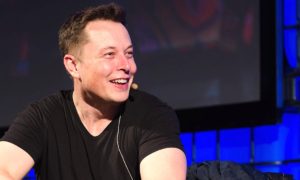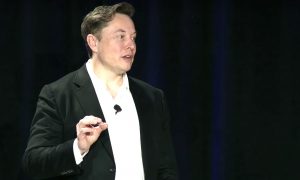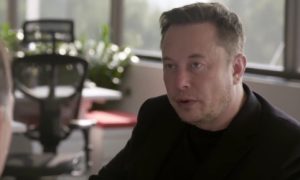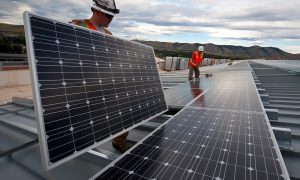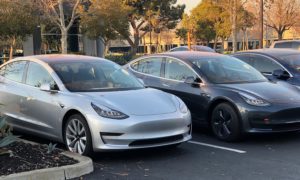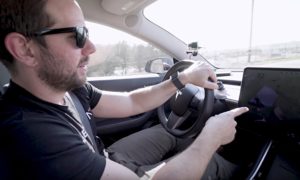News
SolarCity Struggles: National Gridlock (Part III)
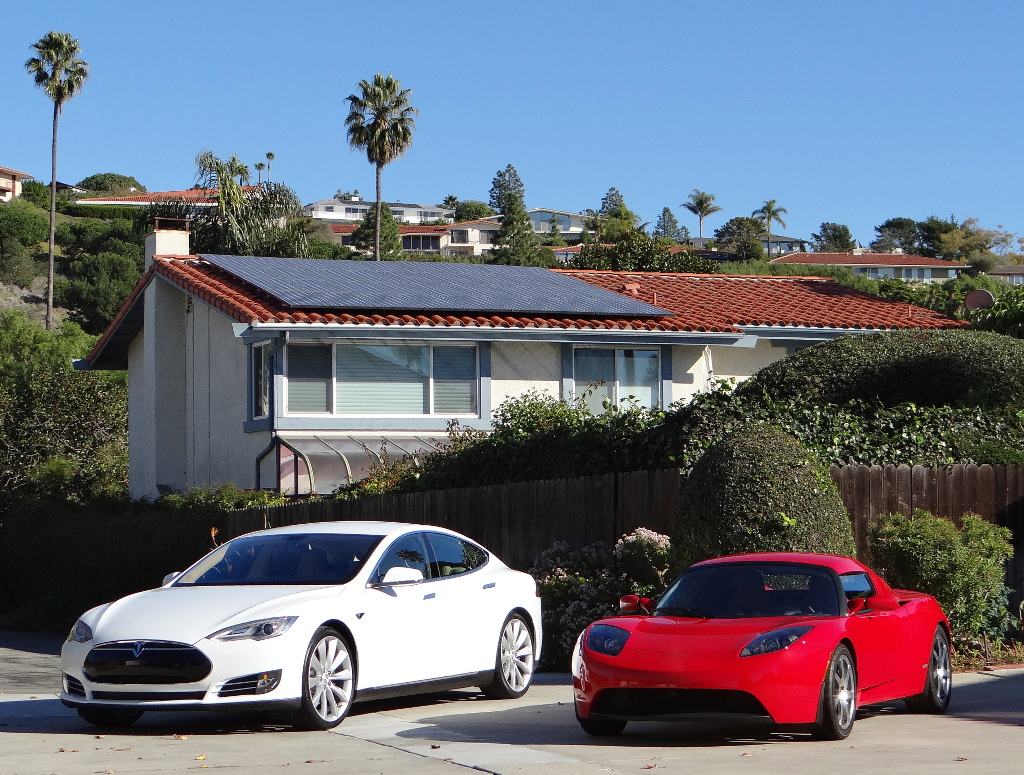
In this final post within my SolarCity Struggles series I’ll be outlining the additional complexities that surfaced after our local power company, National Grid, got involved.
National Grid-Lock
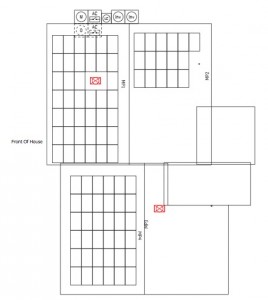 Having already experienced some delays on my solar project due to architectural redesigns, National Grid jumped into the mix to make things even worse by throwing up one road block after another. There was a conflict of interest for National Grid to assist on the project since we would be shifting more than $170,000 of revenue from them to SolarCity. I’d only see a tiny slice of that by way of my energy savings. Despite many city mandates to be “More Green”, the utility companies clearly have no interest in assisting customers to go solar since it would be counter productive for them.
Having already experienced some delays on my solar project due to architectural redesigns, National Grid jumped into the mix to make things even worse by throwing up one road block after another. There was a conflict of interest for National Grid to assist on the project since we would be shifting more than $170,000 of revenue from them to SolarCity. I’d only see a tiny slice of that by way of my energy savings. Despite many city mandates to be “More Green”, the utility companies clearly have no interest in assisting customers to go solar since it would be counter productive for them.
Roadblock #1
National Grid would not allow “net metering” (where you can re-supply energy through solar power) for two different meters at the same address. SolarCity stepped up and offered to join my two meters and upgrade my panel (from 400A to 600A) in order to support net metering. Accounting issues aside, I agreed to the proposed change and moved forward with yet another site visit that would lead to an engineering redesign.
Roadblock #2
Having (verbally) moved past this, National Grid then reported that the transformer for my area was only capable of handling 23kW of generated power and could not support SolarCity’s proposed 56kW system. This was by the most serious setback since it would require a design that would cut my generation down to 23kW or less. This meant dropping the farm completely and scaling the house from 35kW to 23kW.
A 23kW design called for the front of my house to have solar panels while only a portion of the rear of the house would be retrofitted with panels. This would have looked really odd so we decided to scale back the design to a 18kW system and only include panels on the front of the house.
National Grid informed me that the transformers support between 8 – 12 houses in my area so any neighbors that undergo a solar project will be limited to the remaining 5kW that the transformer can support.
Next Steps
Going from a 56kW to 18kW (a 68% drop in planned production) system will reduce my energy coverage to 32% of my power needs through solar. This is unfortunately the case due to National Grid’s limitation despite my property having enough roof surface to generate 100% of my energy needs.
I will save approximately $56,000 over the next 20 years with this smaller set up, a far departure from the original projected savings of $105,000 but still worth pursuing.
A friendly note from SolarCity arrived on September 1st letting me know that my installation was scheduled for December 8th and 9th because of the magnitude of the project. Considering this 18kW system is a third of what would have been, I couldn’t help but wonder how SolarCity would have handled the original plans. I can’t imagine starting this project in the dead of a New England winter. SolarCity indicated that the project would require 4-6 weeks before the “go live” date which meant I wouldn’t be completing until January 2015. That puts the project at about 10 months from start (initial consultation) to finish and assuming all goes well from here on out.
Summary
SolarCity has made a number of mistakes on this project since the beginning; from improperly sizing the system to not knowing the requirements and restrictions of the local power company; to not following owner requests on layout; to not understanding power generation limits imposed by the power company.
My experience with SolarCity has led me to conclude that they’re not ready for widespread adoption outside of key markets and have a lot of work and learning to do before they will be ready for that next stage of growth.
I truly hope the project moves forward. My next updates will be on the post installation experience which will hopefully take place sometime between now and the end of this year. Stay tuned.
SolarCity Struggles Series – Read from the beginning
Image Source: Sun Powered EVs
News
These Tesla, X, and xAI engineers were just poached by OpenAI
The news is the latest in an ongoing feud between Elon Musk and the Sam Altman-run firm OpenAI.

OpenAI, the xAI competitor for which Elon Musk previously served as a boardmember and helped to co-found, has reportedly poached high-level engineers from Tesla, along with others from xAI, X, and still others.
On Tuesday, Wired reported that OpenAI hired four high-level engineers from Tesla, xAI, and X, as seen in an internal Slack message sent by co-founder Greg Brockman. The engineers include Tesla Vice President of Software Engineering David Lau, X and xAI’s head of infrastructure engineering Uday Ruddarraju, and fellow xAI infrastructure engineer Mike Dalton. The hiring spree also included Angela Fan, an AI researcher from Meta.
“We’re excited to welcome these new members to our scaling team,” said Hannah Wong, an OpenAI spokesperson. “Our approach is to continue building and bringing together world-class infrastructure, research, and product teams to accelerate our mission and deliver the benefits of AI to hundreds of millions of people.”
Lau has been in his position as Tesla’s VP of Software Engineering since 2017, after previously working for the company’s firmware, platforms, and system integration divisions.
“It has become incredibly clear to me that accelerating progress towards safe, well-aligned artificial general intelligence is the most rewarding mission I could imagine for the next chapter of my career,” Lau said in a statement to Wired.
🚨Optimistic projections point to xAI possibly attaining profitability by 2027, according to Bloomberg's sources.
If accurate, this would be quite a feat for xAI. OpenAI, its biggest rival, is still looking at 2029 as the year it could become cash flow positive.💰 https://t.co/pE5Z9daez8
— TESLARATI (@Teslarati) June 18, 2025
READ MORE ON OPENAI: Elon Musk’s OpenAI lawsuit clears hurdle as trial looms
At xAI, Ruddarraju and Dalton both played a large role in developing the Colossus supercomputer, which is comprised of over 200,000 GPUs. One of the major ongoing projects at OpenAI is the company’s Stargate program,
“Infrastructure is where research meets reality, and OpenAI has already demonstrated this successfully,” Ruddarraju told Wired in another statement. “Stargate, in particular, is an infrastructure moonshot that perfectly matches the ambitious, systems-level challenges I love taking on.”
Elon Musk is currently in the process of suing OpenAI for shifting toward a for-profit model, as well as for accepting an investment of billions of dollars from Microsoft. OpenAI retaliated with a counterlawsuit, in which it alleges that Musk is interfering with the company’s business and engaging in unfair competition practices.
Elon Musk confirms Grok 4 launch on July 9 with livestream event
News
SpaceX share sale expected to back $400 billion valuation
The new SpaceX valuation would represent yet another record-high as far as privately-held companies in the U.S. go.

A new report this week suggests that Elon Musk-led rocket company SpaceX is considering an insider share sale that would value the company at $400 billion.
SpaceX is set to launch a primary fundraising round and sell a small number of new shares to investors, according to the report from Bloomberg, which cited people familiar with the matter who asked to remain anonymous due to the information not yet being public. Additionally, the company would sell shares from employees and early investors in a follow-up round, while the primary round would determine the price for the secondary round.
The valuation would represent the largest in history from a privately-owned company in the U.S., surpassing SpaceX’s previous record of $350 billion after a share buyback in December. Rivaling company valuations include ByteDance, the parent company of TikTok, as well as OpenAI.
Bloomberg went on to say that a SpaceX representative didn’t respond to a request for comment at the time of publishing. The publication also notes that the details of such a deal could still change, especially depending on interest from the insider sellers and share buyers.
Axiom’s Ax-4 astronauts arriving to the ISS! https://t.co/WQtTODaYfj
— TESLARATI (@Teslarati) June 26, 2025
READ MORE ON SPACEX: SpaceX to decommission Dragon spacecraft in response to Pres. Trump war of words with Elon Musk
SpaceX’s valuation comes from a few different key factors, especially including the continued expansion of the company’s Starlink satellite internet company. According to the report, Starlink accounts for over half of the company’s yearly revenue. Meanwhile, the company produced its 10 millionth Starlink kit last month.
The company also continues to develop its Starship reusable rocket program, despite the company experiencing an explosion of the rocket on the test stand in Texas last month.
The company has also launched payloads for a number of companies and government contracts. In recent weeks, SpaceX launched Axiom’s Ax-4 mission, sending four astronauts to the International Space Station (ISS) for a 14-day stay to work on around 60 scientific experiments. The mission was launched using the SpaceX Falcon 9 rocket and a new Crew Dragon capsule, while the research is expected to span a range of fields including biology, material and physical sciences, and demonstrations of specialized technology.
News
Tesla Giga Texas continues to pile up with Cybercab castings
Tesla sure is gathering a lot of Cybercab components around the Giga Texas complex.

Tesla may be extremely tight-lipped about the new affordable models that it was expected to start producing in the first half of the year, but the company sure is gathering a lot of Cybercab castings around the Giga Texas complex. This is, at least, as per recent images taken of the facility.
Cybercab castings galore
As per longtime drone operator Joe Tegtmeyer, who has been chronicling the developments around the Giga Texas complex for several years now, the electric vehicle maker seems to be gathering hundreds of Cybercab castings around the factory.
Based on observations from industry watchers, the drone operator appears to have captured images of about 180 front and 180 rear Cybercab castings in his recent photos.
Considering the number of castings that were spotted around Giga Texas, it would appear that Tesla may indeed be preparing for the vehicle’s start of trial production sometime later this year. Interestingly enough, large numbers of Cybercab castings have been spotted around the Giga Texas complex in the past few months.
Cybercab production
The Cybercab is expected to be Tesla’s first vehicle that will adopt the company’s “unboxed” process. As per Tesla’s previous update letters, volume production of the Cybercab should start in 2026. So far, prototypes of the Cybercab have been spotted testing around Giga Texas, and expectations are high that the vehicle’s initial trial production should start this year.
With the start of Tesla’s dedicated Robotaxi service around Austin, it might only be a matter of time before the Cybercab starts being tested on public roads as well. When this happens, it would be very difficult to deny the fact that Tesla really does have a safe, working autonomous driving system, and it has the perfect vehicle for it, too.
-

 Elon Musk1 week ago
Elon Musk1 week agoTesla investors will be shocked by Jim Cramer’s latest assessment
-

 News2 weeks ago
News2 weeks agoTesla Robotaxi’s biggest challenge seems to be this one thing
-

 Elon Musk1 day ago
Elon Musk1 day agoElon Musk confirms Grok 4 launch on July 9 with livestream event
-

 News2 weeks ago
News2 weeks agoWatch the first true Tesla Robotaxi intervention by safety monitor
-

 News5 days ago
News5 days agoTesla Model 3 ranks as the safest new car in Europe for 2025, per Euro NCAP tests
-

 Elon Musk2 weeks ago
Elon Musk2 weeks agoA Tesla just delivered itself to a customer autonomously, Elon Musk confirms
-

 Elon Musk2 weeks ago
Elon Musk2 weeks agoxAI welcomes Memphis pollution results, environmental groups push back
-

 Elon Musk2 weeks ago
Elon Musk2 weeks agoElon Musk confirms Tesla Optimus V3 already uses Grok voice AI



